
Key Takeaways
- Consistent riding improves technique and endurance.
- Recovery and nutrition are vital for performance.
- Proper bike fit and goal-setting are key to cycling success.
Ever wondered how pro cyclists make riding look so effortless?
Whether you're cycling to work or training for a century, there's always room to pedal more efficiently.
Cycling pros have honed their techniques over countless hours, unveiling secrets that can elevate your daily rides into smoother, faster, and more enjoyable journeys.
When you read advice straight from the pros, you’re getting tried-and-tested knowledge.
Their expertise stems from years of training, competing, and learning the intricacies of the sport.
Focus on Consistency
Hey there, fellow pedal-pusher!
You know that feeling when you're zipping through a crisp morning breeze, feeling like you own the road?
That's the magic of cycling—pure, exhilarating freedom.
But to keep that feeling going, you've got to stick with it day after day.
That's right, I'm talking about consistency in your training.
Why?
Because just hopping on your bike whenever you feel like it is like trying to bake a cake by chucking in ingredients "whenever." Spoiler alert: That cake isn't gonna taste very good.
You want to improve, right?
Build that endurance and gain strength?
Consistency is your secret ingredient.
Here's the lowdown:
- Set clear goals: Break them into bite-size pieces you can nail regularly.
- Regular training: Get on that bike consistently, even if some days it's just for a short ride. Every pedal stroke counts.
- Prep your gear: Keep your cycling kit, water bottles, and snacks ready so there are no excuses.
Imagine treating your rides like appointments with your favorite TV show—non-negotiable and a highlight of your day.
You wouldn't miss the season finale, so why miss your ride?
While you weave consistency into your life:
- Mix it up to avoid boredom. Keep some rides thrilling, others more chill.
- Don’t be hard on yourself. If you miss a day—it happens—just climb back on the saddle tomorrow.
- Remember—small, everyday efforts lead to big wins. It's like saving money; it all adds up.
Lastly, keep a journal or an app to track your progress.
Nothing fancy, just something to give you that 'heck yeah!' feeling when you see how far you've come.
Let's make those wheels turn regularly, shall we?
Go get 'em, tiger! 🚴♂️💨
Prioritize Recovery
Hey there!
Ever wondered why pro cyclists seem to bounce back so quickly after a grueling race?
It's not just all about the pedaling; it's the recovery that really counts.
Ready to unlock the secret sauce?
Let’s dig in!
First up, sleep.
It's not just for the lazy; it’s a champion's best friend.
Snooze like you mean it, with a full night's rest and, if you can, a power nap.
Need to catch Zzzs on the go?
Even a quick snooze on a bus ride can work wonders.
Just ask the pros; they make it a point to get horizontal for faster recovery.
Next, let's talk nutrition.
After your ride, your muscles are begging for some TLC, and the right food is their love language.
Think a recovery shake to kick things off, followed by a meal with a good balance of protein and carbs — yes, chicken and rice can be your ticket to bounce-back town.
But why stop there?
Treat your muscles to a massage or get cozy with a foam roller.
It’s like a spa day for your legs, and trust me, they’ll thank you for it by feeling fresher on your next ride.
Remember, your time off the bike is just as valuable as the time on it.
Your recovery routine isn't just downtime; it's building up your strength for the next challenge.
So, go ahead, relax, watch some TV, or meditate.
Just make sure you're staying on top of your recovery strategy like a pro.
After all, the faster you recover, the sooner you can get back on the saddle.
Ready for the next ride?
Optimize Nutrition
Hey there, cycling enthusiast!
Have you ever wondered how pro cyclists keep their energy soaring and their muscles primed?
It's all in the nutrition!
Let me take you on a brief tour of optimizing your fuel for the ride.
First things first—carbs are your best friend when it comes to cycling.
Your body needs a solid stock of them to keep pedaling without hitting a wall.
Aim for about 30 grams of carbs per hour for short 1-2 hour rides.
If you're saddling up for a longer haul, say 2-3 hours, bump that up to 60 grams.
And for those epic treks exceeding 3 hours, you'll want to shoot for a cool 90 grams per hour.
But don't forget about water, the unsung hero!
Sip on 1.5-2 litres throughout the day to replace what you sweat out, keeping everything in balance.
Hydration is key to keeping your body temperature on the level during those grueling climbs and sprints.
In the realm of pro tips, let's talk timing: a little pre-ride snack can give you that extra zip, and a post-ride meal rich in protein and carbs helps kickstart your muscle recovery.
It's like a thank-you to your body for all the hard work!
Cycling Nutrition Guide:
- Before Riding: Have a balanced meal about 2-3 hours prior. Carbs are your launchpad.
- During Riding:
- 1-2 hours: 30g carbs/hr
- 2-3 hours: 60g carbs/hr
- 3+ hours: 90g carbs/hr
- After Riding: Refuel with a mix of carbs and protein within 30 minutes to maximize recovery.
Remember, whether you're prepping for a race or just out for a scenic spin, your nutrition can make or break your ride.
So snack smart, stay hydrated, and enjoy the journey on two wheels!
Master Bike Handling Skills
Ever wondered how the pros glide along the road, handling their bikes with such finesse?
Bet you'd love to ride with that same confidence and skill, right?
Well, buckle up!
I've got some top techniques to get you handling your bike like a pro.
Cornering, for instance, is an art in itself.
It's more than just turning the handlebars; it's about leaning into the turn and trusting your bike.
Start with:
- Master the Basic Position: Keep your body relaxed.
- Look Ahead: Eye the path you want to take.
Descending is another skill that can feel like a breeze or a nightmare, depending on how you handle it.
You want to descend with control and precision, not like you're on a roller coaster ride with a mind of its own.
- Stay Centered: Balance your weight evenly between the front and rear wheels.
- Feather Brakes: Apply them lightly but consistently to maintain speed.
And then there's riding in a group.
Ever felt the jitters as you roll wheel to wheel with other riders?
The key is smooth movement and a sharp awareness of your surroundings:
- Hold Your Line: Ride predictably to avoid causing chaos.
- Communicate: Signals aren't just for cars; use hand gestures to indicate turns or stopping.
Remember, bike handling skills are not just about looking cool; they boost your safety and riding enjoyment.
So the next time you're out pedaling, try these techniques.
With some practice, you'll be smoother, faster, and more efficient on two wheels.
Just imagine that next group ride where you're the one setting the pace – feels good, doesn't it?
Use Power and Heart Rate Data
Hey, fellow cyclist!
Have you ever wondered how to ride smarter, not just harder?
Well, here’s where power meters and heart rate monitors come into play.
These nifty gadgets are like your personal cycling coach, giving you real-time feedback and pinpointing exactly where your sweet spot is.
Why Power Meters?
Let's talk stats.
Power meters can display your output in watts, and they're known for their precision.
Imagine tweaking your effort level between 242.5-257.5 watts or maybe pushing it to 485-515 watts.
That level of detail can show when you're improving, and by how much!
- Long-term Progress: A power meter tracks it.
- Accuracy: Depending on the model, they vary (0.5%, 1%, etc.).
- Balance: Ever thought about your left/right leg power? A power meter has.
And Heart Rate Monitors?
While power meters show your effort, heart rate monitors reflect how your body responds to that effort.
It’s about seeing the bigger picture – how is your ticker keeping up?
- Resting Heart Rate: Your fitness baseline.
- Heart Rate Variability (HRV): Tells you about recovery.
- Sleep Metrics: Because rest is as key as the ride!
In a study with 144 pro cyclists, a humongous collection of data was used to analyze performance.
This kind of research helps in understanding the correlation between power output and heart rate data.
Example Time:
Cyclist A hits a heart rate of 150 bpm with a stroke volume of 70ml.
That's a cardiac output of 10,500mL/min.
Cyclist B? 170 bpm but with a stroke volume of 61.77ml, resulting in the same output.
It shows that everyone's engine works differently, and knowing your numbers can tailor your training!
So go ahead, use the tech, get the data, and ride like a pro.
See you on the road, with all the numbers on your side! 🚴♂️💨
Stay Hydrated
Hey there, cycling enthusiast!
You know what’s just as important as a smooth gearshift?
Staying hydrated.
Ever wonder why pro cyclists always look like they're sipping something?
It’s because they know the secret sauce to peak performance is good ol’ H2O mixed with a few extras.
Let’s get down to the nitty-gritty.
For rides between 1 to 3 hours, aim for 24-28 ounces of fluid per hour.
That’s about 6-7 ounces every 15 minutes.
But we're not just talking water; we need those carbs and electrolytes too.
A nice balance is around 30-60 grams of carbs and 500-700 mg of sodium per hour.
When the sun’s blazing, your sweat session is on overdrive.
So remember, more heat equals more hydration.
Try to take 2-3 gulps from your bottle every 10-15 minutes and start right from the beginning of the ride—don’t wait until you're as parched as a desert cactus.
Here's a quick breakdown:
- Medium Rides (1-3 hours): 24-28 oz/hour with carbs and electrolytes.
- Hot Days: Increase intake, frequent gulps every 10-15 minutes.
- Short Rides (<60 mins): Plain water will do the trick.
Mastering hydration is not just about drinking fluids, it starts with a plan.
Keep a bottle handy and make it a habit to sip without waiting for thirst to beckon.
Your muscles and mind will thank you with every pedal stroke.
Cheers to conquering the pavement and keeping dehydration at bay!
Now, grab that bottle and ride on!
Remember, it's not just about the bike—it's about how you fuel the engine.
Ride with a Group
Hey there, ready to join the peloton?
Group riding is not just about sharing laughs and stories—it's about smart cycling and synergy.
Let's break down the essentials to get you rolling smoothly with your new buddies.
Stick to Formation: Rides are more fun—and safe—when everyone adheres to a tight formation.
Rule of thumb: ride two-by-two and keep a steady pace.
Remember, you're not in a solo breakout; you're part of a unit!
- Two-By-Two: Keep your handlebars aligned with your partner's; this isn't a game of leapfrog.
- Pacing is Key: Uphill? Don't be the hero who breaks the pack. Keep it steady for everyone's sake.
Drafting like a Pro: Here's a secret—staying on the wheel in front of you saves your energy.
Get close, but no tailgating!
A few centimeters is all you need to catch that sweet draft and glide along.
- Follow, don't lead: Keep a close eye on the rider in front without overlapping wheels.
- Change Gears Mindfully: When attacking an incline, do it with finesse to avoid the accordion effect.
Respecting the Ride: Group rides are not races or personal training sessions; they're about collective rhythm.
- Stick to the Group's Tempo: It's like a dance; find the rhythm and stick to it.
- Communication is King: Signal turns, point out hazards, and give a heads-up for stops.
It's not just about the workout; it's about camaraderie.
With these tips, you'll not only boost your riding skills but also enjoy the supportive hum of cycling together.
Ready to roll out?
Invest in a Bike Fit
Hey there, cycling enthusiast!
Ever wondered why pros look so at ease on their bikes?
Well, it's not just their superhuman fitness, but also that each pro has a bike tailored just for them.
And guess what?
You should too!
A professional bike fit isn't a luxury—it's a necessity for anyone serious about cycling, including you!
So, what happens during a bike fit?
You'll get measured for your:
- Height: To determine bike frame size.
- Arm length: For handlebar reach.
- Leg length: To set up saddle height and position.
Why is this important?
Because the right fit prevents injuries, ups your comfort, and boosts your riding efficiency.
Here's the deal:
- Prevent Injuries: An ill-fitting bike can lead to aches and pains, or worse, long-term injuries. Yikes!
- Improve Comfort: Say goodbye to that sore back and hello to longer rides!
- Enhance Efficiency: Every pedal stroke counts. Get the most power with the least effort.
Don't think this is just for race days or for those cycling cross-country.
Even if you're just starting out, a professional bike fit ensures your introduction to cycling is nothing but smooth pedaling.
Remember, pro cyclists like Mathieu van der Poel and Tom Pidcock get bike fits for a reason, but their perfect position won’t necessarily be perfect for you.
Your ride, your fit!
Bring your usual cycling gear to the fit session—your trusted kit and shoes.
Why?
Because comfort in what you wear can influence the fit.
An old chamois might not match the support of a new one, and worn-out shoes could mess up your foot positioning.
Found your perfect ride but it doesn't feel 100% right?
A bike fit will make that difference.
And don't worry about the cost being a barrier; it's an investment in your cycling happiness.
Trust me, your body will thank you!
Looking to fly on two wheels without the owies?
Get that bike fit!
Pace Yourself
Ever felt like you're biting off more than you can chew during a cycling event?
You start off strong but halfway through, you’re gasping for air while others smoothly sail by.
Sounds familiar?
Let's avoid that with some smart pacing strategies.
Starting slow might seem counterintuitive, but did someone say "slow and steady wins the race"?
It's actually true.
You want to begin at a pace that feels almost too easy.
During the first third of your ride, keep your effort at a level where you can chat without huffing and puffing.
Why?
Because it’s all about energy conservation.
Ask yourself, what’s the rush?
The middle phase is your cue to moderately increase your effort—notice that keyword, moderate.
This is the time to focus on maintaining a consistent output.
It shouldn't feel like a breeze, but also not like you're in a sprint.
You're aiming for a “comfortably hard” zone.
As for the final stretch, this is where you can gradually start to ramp it up.
You've preserved that precious energy, so now you're ready to shine.
This isn't license to go all-out just yet—hear me out!
Increase your pace in small increments, only pushing harder in the last few miles if you're feeling good and there's still gas in the tank.
Remember, cycling isn't just about leg power; your heart and lungs are in on it too.
Keeping a steady heart rate throughout can make a world of difference.
Try a heart rate monitor—seeing tangible numbers can prevent overexertion too early on.
So, what's your game plan going to be for your next ride?
With a thoughtful pacing strategy, you'll be zipping past that finish line, maybe with enough energy left for a victory dance!
Keep practicing, and pacing will soon become your second nature.
Happy cycling!
Set Goals and Track Progress
Ever wondered how pro cyclists keep pushing the pedal harder and faster?
They set SMART goals—Specific, Measurable, Achievable, Relevant, Time-bound—and keep a keen eye on their progress.
So, how about you?
First up, it's all about getting specific.
Want to improve your sprint?
Target an increase in power output.
Dream about nailing a personal best in a time trial?
Write that down.
The trick is to define what you want clearly enough so you can measure your improvements.
Let's get real, your goals should challenge you, but they shouldn't be mountain stages when you're just starting out.
Aim for something you have a solid shot at, say a 70-80% chance.
Too easy is snooze-worthy, and too hard is just a shortcut to demotivation.
How do you keep track?
Logs, people!
Or go digital with cycling analytics software.
Keep tabs on your speed and power output for every ride.
Seeing those numbers edge up is like a high five from your past self!
Not a tech whiz?
No problem.
A simple notebook can work wonders too.
The key is to consistently record and review your rides.
It's the breadcrumb trail of how far you've come and the map to where you're heading.
So go ahead, set those goals, track your progress, and remember: every pedal stroke is progress!
Keep it fun, keep it real, and let's make those cycling dreams tangible, one goal at a time.
Ready to ride your way to success?















































































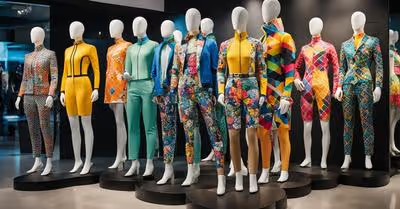























































































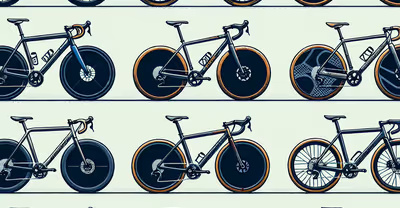

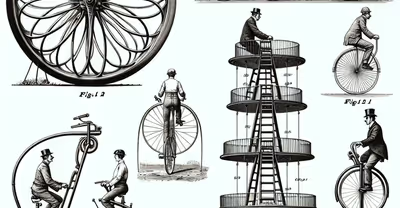





































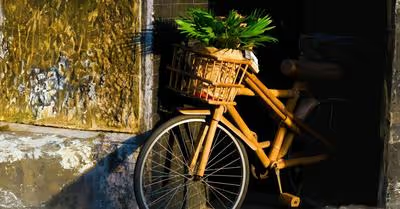










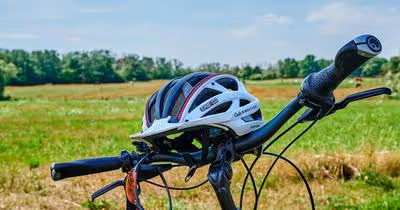



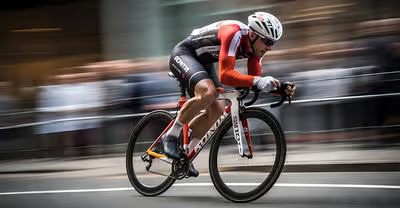

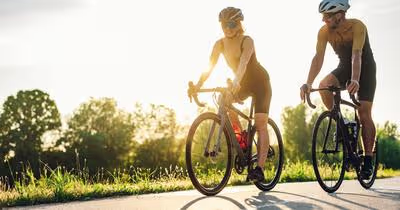



















































































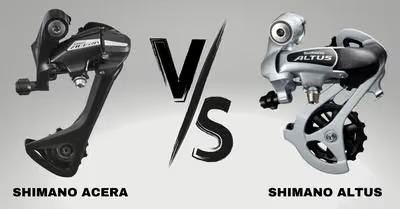


























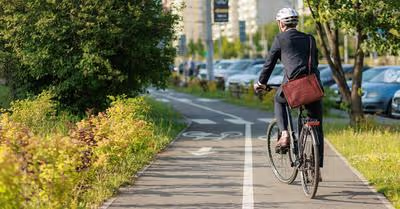

















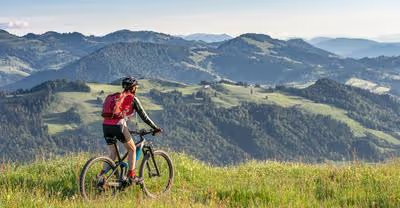




































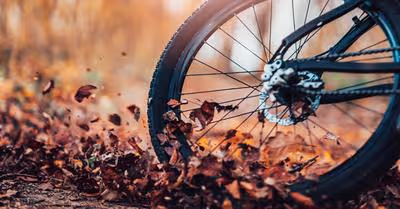




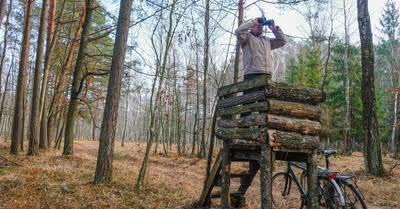















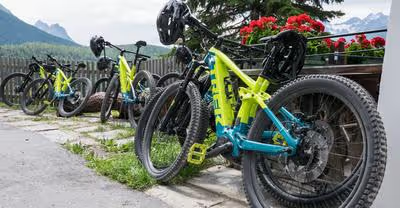




















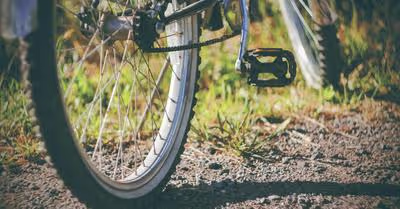


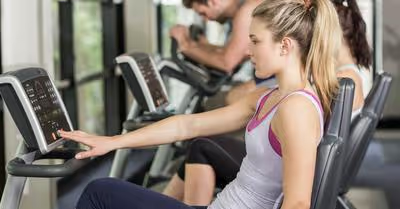



























































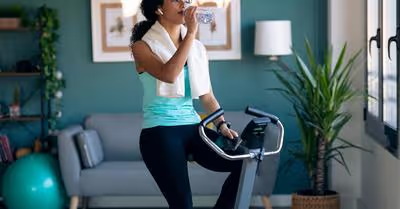














































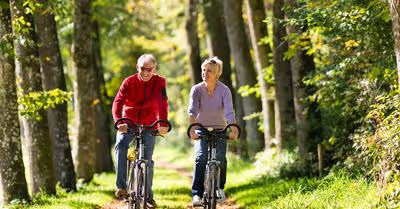










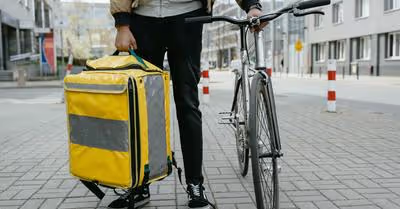



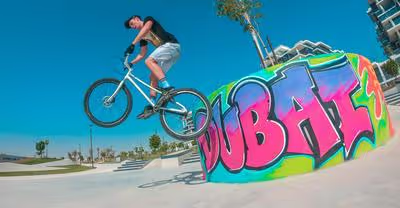



































































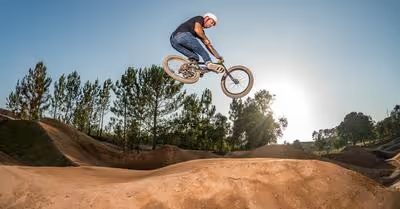







































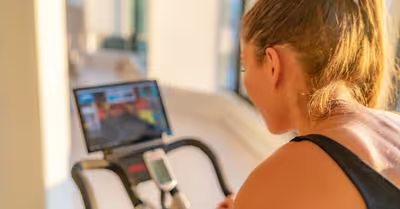



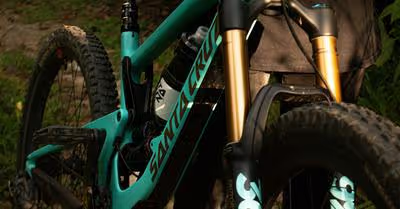
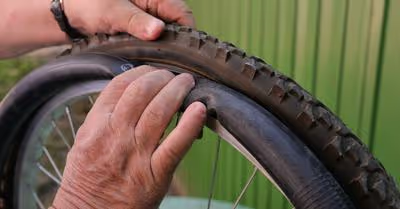







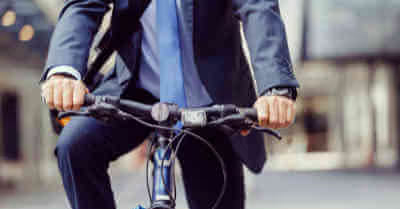









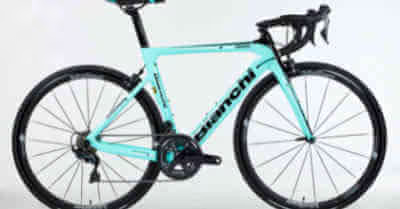



































.avif)
